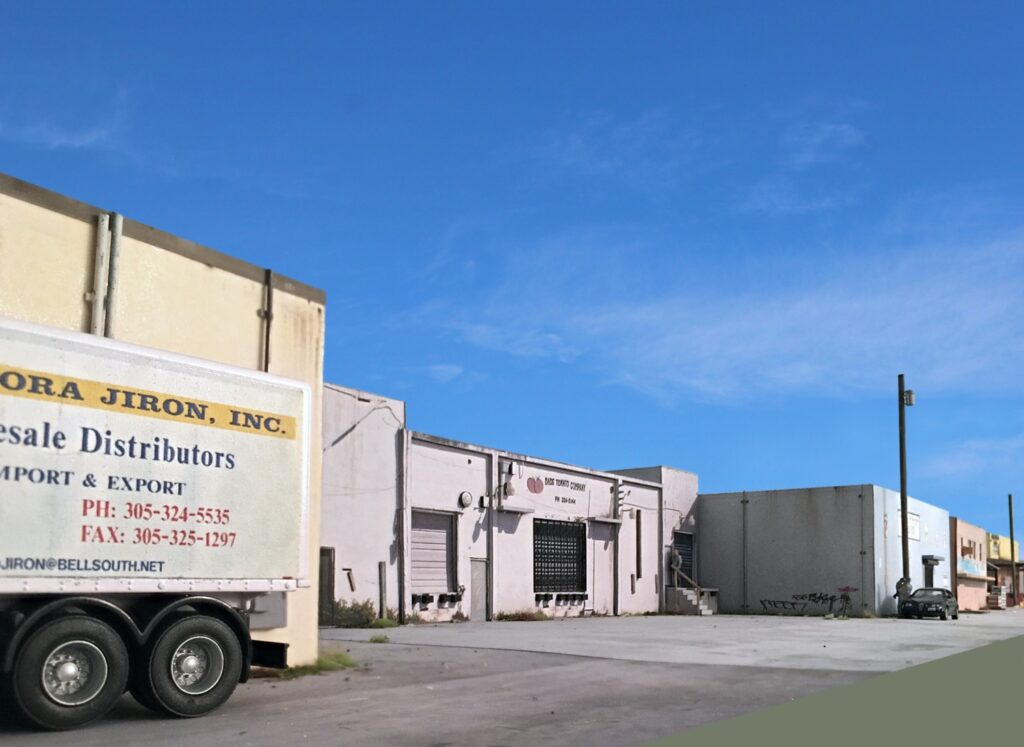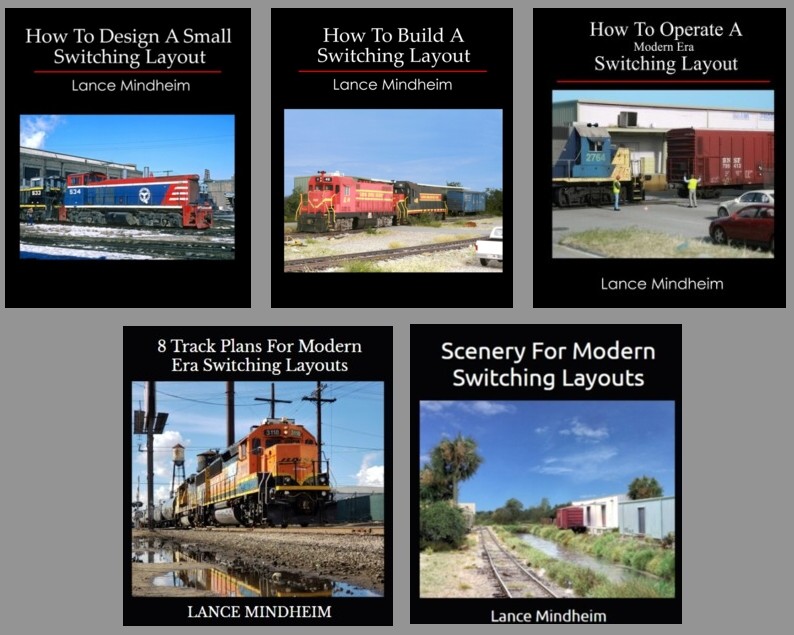
Looking east down 22nd Street on my Downtown Spur layout. The layout is located in an eighteen by eighteen foot room and has thirteen turnouts.
Switching layouts and moderate-size branch line railroads aren’t about “settling”. They aren’t the sole province of the space-deprived or financially strapped.
They’re about access. They provide an easy entry portal into the hobby. Typically there’s an immediate leap to space and budget when we think of assets. Model railroading, approached rationally, isn’t that expensive and is within reach of even a high school student with a summer job.
Assets aren’t only about space and money though. Sparse assets in other areas do provide a barrier to getting into the hobby and that’s where the simpler layouts offer a workaround. Most modelers are financially comfortable. They can afford cable, Friday nights with the family at The Olive Garden, and an SUV in the driveway. Time isn’t the issue either. I have too many active-duty military friends who are modelers for me to believe that. Everybody can find at least a few hours a week. The problem is you need other assets to get a functional layout up and running, and that’s where people get stuck. Even if you have space, time, and money (and almost everyone does) you still need:
-Basic Skills
-Energy
-Focus
Those new to the hobby would be wise to attain some basic skills and confidence before leaping into a basement-filling railroad project. If you’ve spent 75 minutes in the car morning and night, having the energy and motivation to work on modeling is questionable. Screen and device distraction is real and erodes our ability to focus. Switching layouts require less skill, energy, and focus.

My Modern Era Switching Layout series lays down a path from armchair modeler or newcomer to getting trains running on a layout.
We’re entering the new year. Why not set the achievable goal of getting at least the bones of switching layout built and trains running? Scenery and structures can wait until 2025. I have an entire series of books to guide you through the process. The Fruitland Team Track or CIS Light designs in the 8 Track Plans book are can’t loose starting points. Get the bench work up and lay down some Peco code 70 with Unifrog turnouts. Pick up a decent Athearn genesis or Rapido loco and start slamming some cars. Get your hands dirty. Make your mistakes. Have some fun.
I’ll even sweeten the pot. Any reader that gets that far with their layout, and emails me that they’re bored, will get a full refund on the cost of their blog subscription fee.
Happy Holidays to you and your family Lance! One of the best things I ever did for myself in this hobby was take your advice. I got off the sidelines and built a one-turnout layout as recommended in one of your blog posts several years ago based on a bakery. Almost 4 years later, the layout is going strong and very entertaining. Finding 10 minutes to switch a car or two several times a week has been very rewarding and provided much satisfaction. My only regret……Not doing it sooner!
Thanks Joe. The nice thing about model railroading is that once you acquire the basic skills to do a small layout, moving on to something larger is pretty simple. You just repeat the same steps on a larger scale.
One of the things that frustrates me the most about this hobby is modelers who refuse to remember where they started.
Layout articles should expand the layout builder bios and include some information on how they started in the hobby. Everyone, new and old, needs to be reminded that the large layouts we see are usually not first efforts.
No one starts out buying a fleet of locomotives; no one starts out scratch-building everything. We all started small and expanded our skills. This is where the expense argument annoys me the most – “Everything is too expensive for someone starting in the hobby!” Really? Could anyone with a basement-filling layout today have been able to afford (and had the skills) to construct that layout when they first started in the hobby? Yes, I grant there are people who had no model railroad experience prior to early retirement and had the time and money to dive right it. I would argue the typical new modeler doesn’t.
I would love to have a layout with a long mainline to run long trains. Right now I have a small layout based on a local short line with relatively small industries. There is building supply company that received 1-3 cars a week. Switching it once a week is prototypical! I’ve set the era when there was a spur that served two industries, with an unprotected grade crossing between them. There’s some operational interest.
A random thought about industrial switching and branch lines is that they usually feature smaller equipment, more suitable for building a smaller layout.
I’ve been fascinated by urban and industrial railroading for years, with the LAJ and Modesto & Empire Traction leading that fascination. I didn’t know about the Miami railroad history, and East Rail and the Downtown Spur have become further inspiration.
A final thought is a suggestion, for all modelers, new and old, to seek out printed material about railroading and dedicate some time each week to reading. I find printed magazines and book provide undistracted focus and inspiration, and restore motivation for modeling.
Excellent comments Anthony. Thanks. For those interested in reading about my rocky, wandering path during my early years in the hobby check out my May blog on Three Car Pileups.
https://lancemindheim.com/2023/05/three-car-pile-ups/
After something like 50 years as an armchair “modeler,” some years ago I finally started building a P48 switching layout. At the very begining the theme was to be a portion of a rural branch line focused on a small town grain elevator, a’ la Tom Johnson. However, after getting the track laid, the pull of another inspirational layout in the 2008 issue of GMR proved too strong to resist. Fortunately the track plan, which strangely enough is quite similar to the South Shore spur, readily adapted to the theme change. Now several years later, my freelanced industrial spur in a palm tree climate is operational, with basic scenery and buildings in place. Much left to be done, but after all these years I’m getting a kick out of seeing and hearing the switch job roll. Should have never waited so long!
Thanks Ray. Sounds like you’re on the right track…no pun intended.